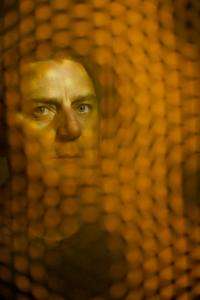Help wanted: Insect classifiers needed

Filled with tables, chairs and computers, Eamonn Keogh’s lab at the University of California, Riverside Bourns College of Engineering looks like many computer science labs.
That changes when the closet door is opened. Inside are a couple dozen shoebox-size plastic containers, each filled with up to 100 insects and connected to a laser that shines through the container to an optical sensor on the opposite side. When the insect passes through the laser, the sensor collects a short snippet of the sound it makes.
The contraptions, which Keogh and his collaborators and students designed and built, are a step toward merging computer science and entomology – a field Keogh has dubbed computational entomology. His goal is to create an inexpensive way to count and classify insects to help solve pressing global problems, such as insect damage to food crops and insect-borne diseases, such as malaria.
With that in mind, he has launched an insect classification contest that uses a computer program he developed that takes two insect audio snippets and calculates their similarity. Keogh is making the program available for free to people in hopes that they can improve the accuracy of the program.
Yanping Chen, one of Keogh’s Ph.D. students, has figured out a way to classify the flying insects with about 80 percent accuracy, but the goal is 99 percent or better accuracy.
“We have no idea what is possible,” Keogh said. “It’s possible the first person could improve it to 100 percent. I doubt it. But it’s possible.”
As a contest incentive, Keogh is offering a $500 prize and an engraved trophy for the winner. Keogh’s insect work is supported by Vodafone America, but the prize money is coming from his own pocket.
Those interested in taking part in the contest can visit: www.cs.ucr.edu/~eamonn/CE/UCR_Insect_Contest.pdf. For more information, potential contestants can send an e-mail to: UCR.insect.contest2012@cs.ucr.edu .
Humans and insects have a longtime love-hate relationship. Insect-borne diseases annually kill a million people and destroy tens of billions of dollars worth of crops. At the same time, insects pollinate the majority of crop species, and an estimated one third of all food consumed by humans is directly pollinated by bees.
For hundreds of years humans have attempted to kill unwanted insects. While some blanket methods have been successful, they can be costly and create environmental problems.
The wireless bug sensor Keogh is developing aims to change that by counting and classifying the insects so that the substance used to eradicate the harmful insects can be applied on a targeted level.
Keogh – who originally developed the sensor with Legos, a 99-cent store laser pointer and a photodiode from a television remote control – believes the sensors can be built for less than $10 and be powered by solar power or a battery that lasts a year.
In creating the contest, Keogh was inspired by several other successful crowdsourcing projects, including one by Netflix in 2009 to improve the accuracy of predictions about how much a person will like a movie.
“Using crowdsourcing has worked for others in problems as diverse as medical image analysis and whale song identification, Keogh said. “But this is the first time it has been applied to insect classification”
Provided by University of California - Riverside



















